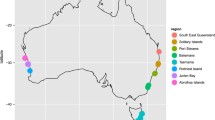Abstract
Computer vision technology has been considered in marine ecology research as a innovative, promising data collection method. It contrasts with traditional practices in the information that is collected, and its inherent errors and biases. Ecology research is based on the analysis of biological characteristics (e.g., species, size, age, distribution, density, behaviors), while computer vision focuses on visual characteristics that are not necessarily related to biological concepts (e.g., contours, contrasts, color histograms, background model). It is challenging for ecologists to assess the scientific validity of surveys performed on the basis of image analysis. User information needs may not be fully addressed by image features, or may not be reliable enough. We gathered user requirements for supporting ecology research based on computer vision technologies, and identified those we can address within the Fish4Knowledge project. We particularly investigated the uncertainty inherent to computer vision technology, and the means to support users in considering uncertainty when interpreting information on fish populations. We introduce potential biases and uncertainty factors that can impact the scientific validity of interpretations drawn from computer vision results. We conclude by introducing potential approaches for providing users with evaluations of the uncertainties introduced at each information processing step.
Access this chapter
Tax calculation will be finalised at checkout
Purchases are for personal use only
Similar content being viewed by others
References
Cappo, M., P. Speare, and G. De’ath. 2004. Comparison of baited remote underwater video stations (bruvs) and prawn (shrimp) trawls for assessments of fish biodiversity in inter-reefal areas of the great barrier reef marine park. Journal of Experimental Marine Biology and Ecology 302(2): 123–152.
Cochran, W.G. 1977. Sampling techniques, 3rd ed. New York: Wiley.
Beauxis-Aussalet, E., L. Hardman, J. van Ossenbruggen, J. He, C. Spampinato, and B. Boom. 2012. D2.1 user information needs; d2.2 user scenarios and implementation plan; d2.3 component-based prototypes and evaluation criteria; d6.6 public query interface. Fish4Knowledge Project: Technical Report Del 2.1/2.2/2.3/6.6. Accessed 4 Nov 2014.
Gibson, R., M. Barnes, and R. Atkinson. 2001. Practical measures of marine biodiversity based on relatedness of species. Oceanography and Marine Biology 39: 207–231.
Harvey, E., D. Fletcher, and M. Shortis. 2001. A comparison of the precision and accuracy of estimates of reef-fish lengths determined visually by divers with estimates produced by a stereo-video system. Fisheries Bulletin 99: 63–71.
Kraan, M., S. Uhlmann, J. Steenbergen, A. Van Helmond, and L. Van Hoof. 2013. The optimal process of self-sampling in fisheries: Lessons learned in The Netherlands. Journal of Fish Biology 83(4): 963–973.
Langlois, T., P. Chabanet, D. Pelletier, and E. Harvey. 2006. Baited underwater video for assessing reef fish populations in marine reserves. Fisheries Newsletter - South Pacific Commission 118: 53.
Lowry, M., H. Folpp, M. Gregson, and I. Suthers. 2012. Comparison of baited remote underwater video (bruv) and underwater visual census (uvc) for assessment of artificial reefs in estuaries. Journal of Experimental Marine Biology and Ecology 416–417: 243–253.
Magurran, A. 2004. Measuring biological diversity. Malden: Taylor & Francis.
Spampinato, C., E. Beauxis-Aussalet, S. Palazzo, C. Beyan, J. Van Ossenbruggen, J. He, B. Boom, and X. Huang. 2013. A rule-based event detection system for real-life underwater domain. Machine Vision and Applications 25(1): 99–117.
Taylor, M., J. Baker, and I. Suthers. 2013. Tidal currents, sampling effort and baited remote underwater video (bruv) surveys: Are we drawing the right conclusions? Fisheries Research 140: 96–104.
Trevor, J., B. Russell, and C. Russell. 2000. Detection of spatial variability in relative density of fishes: Comparison of visual census, angling, and baited underwater video. Marine Ecology Progress Series 198: 249–260.
Author information
Authors and Affiliations
Corresponding author
Editor information
Editors and Affiliations
Rights and permissions
Copyright information
© 2016 Springer International Publishing Switzerland
About this chapter
Cite this chapter
Beauxis-Aussalet, E., Hardman, L. (2016). User Information Needs. In: Fisher, R., Chen-Burger, YH., Giordano, D., Hardman, L., Lin, FP. (eds) Fish4Knowledge: Collecting and Analyzing Massive Coral Reef Fish Video Data. Intelligent Systems Reference Library, vol 104. Springer, Cham. https://doi.org/10.1007/978-3-319-30208-9_2
Download citation
DOI: https://doi.org/10.1007/978-3-319-30208-9_2
Published:
Publisher Name: Springer, Cham
Print ISBN: 978-3-319-30206-5
Online ISBN: 978-3-319-30208-9
eBook Packages: EngineeringEngineering (R0)




